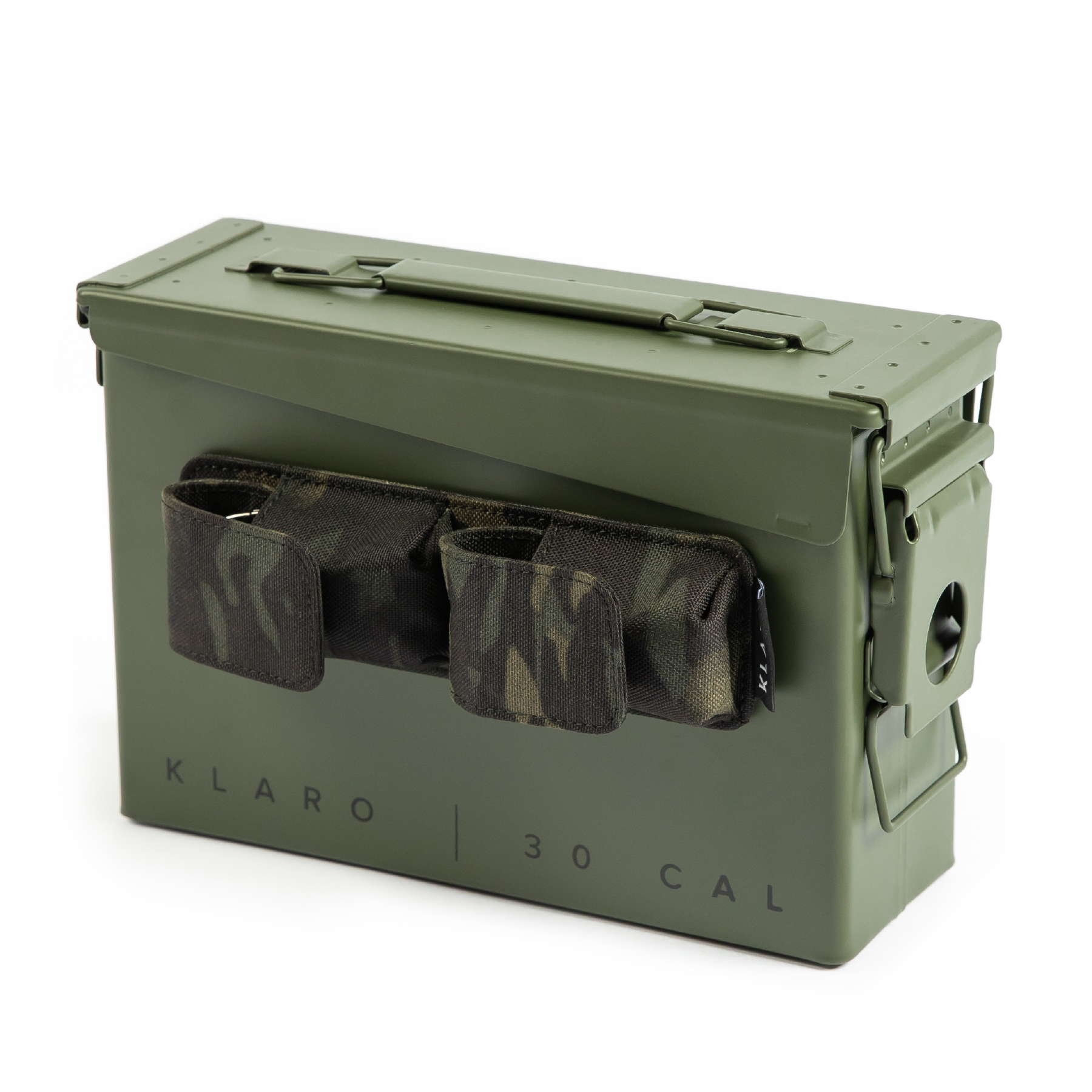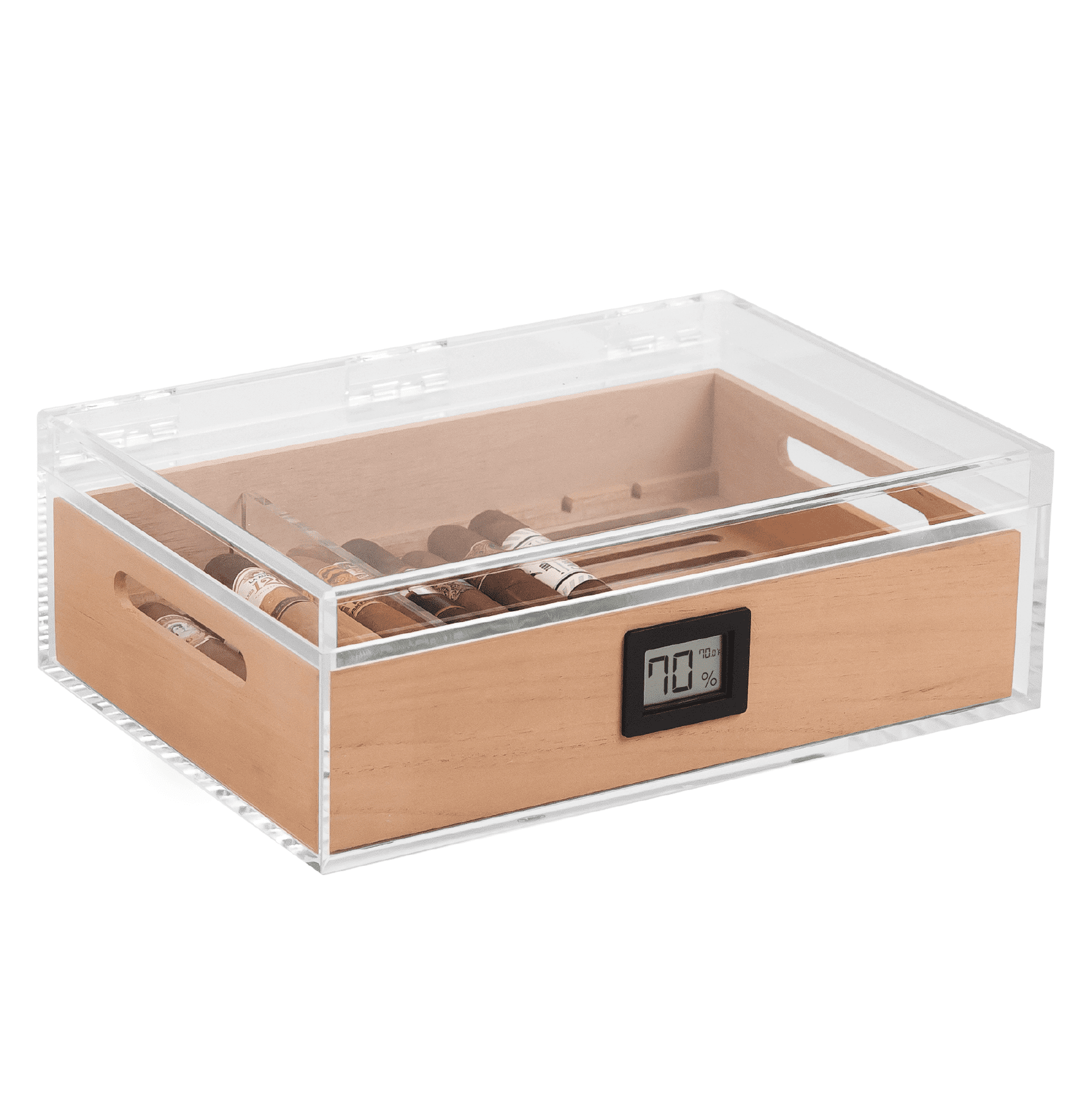The type of humidor you buy will differentiate the price. And the biggest difference in type is related to either size or material. For example, larger humidors generally carry a steeper price tag than small humidors or travel humidors. For material, wood humidors are often more expensive (and more effective) than options like glass or acrylic.
Humidor wood quality and function don’t always coincide with price. Too often we end up paying too much or too little for a product we’re unhappy with. For humidors especially, it’s important to know what you’re paying for and why. If you’ve ever spent far too much on a cigar that was supposedly worth the extravagant cost, you know the lesson well: get what you pay for.
Now, if left with a blank check or a credit card unconnected to your account, you likely wouldn’t take long to rack up a sizable tab at your local cigar shop: cigars, accessories, a humidor or three. But when buying practically, what should you be paying for a humidor that’s right for your needs?
If you’re new to shopping humidors, let’s prevent wasting money on a humidor that won’t last–or one you don’t actually need. If you’re a veteran who has owned a few humidors already and have your eye on an upgrade: let’s make sure you’re approaching the decision rationally.
When is an affordable price too good to be true? Or when does the increase in quality become negligible to the increase in cost? Here we’ll go through qualities worth paying for when choosing your humidor. We’ll look at three ranges of prices so you can identify important quality comparisons.
What determines the cost of a humidor?
Spend some time shopping for humidors and you’ll quickly find there’s a wide gamut of prices and types. Some differences in price are based on quality and function, others are based on preference. When you spend thousands of dollars on a rare, antique humidor, for example, it’s not likely you’re spending that much for function.
But what differentiates the real cost of a humidor when it comes to quality and function?
Craft, design, materials, and reputation each affect the overall price of a humidor. And, unsurprisingly, finely crafted, well-designed humidors made from quality materials tend to have a good reputation. So let’s get granular about what components make a humidor worth the price tag.
Type of humidor
Travel humidors, acrylic, desktop, walk-in, cabinet humidors, glass top, glass-jar humidors–there are about as many types of humidors as you imagine. Apparently, necessity has bred invention, and we’ve even seen ammo boxes converted into makeshift humidors.
When it comes to functionality, Spanish cedar is the standard wood for the interior of a humidor. And, respectively, it’s some of the most expensive woods used. Not only is Spanish cedar a great wood for maintaining humidity levels–absorbing moisture in humid environments and releasing moisture in dry environments–but it also doesn’t rot. On top of that, it’s imported material, increasing its price tag.
American red cedar and Honduran mahogany are close seconds to Spanish cedar. These are still effective and are more affordable. The takeaway: choose a wood interior that can absorb and release humidity. If the wood is prone to rotting or doesn’t absorb humidity, you might be better off with acrylic or glass.
Humidifier
The humidification element in a humidor regulates humidity levels. The humidor humidifier works in conjunction with the Spanish cedar, or other absorbing materials, to maintain a consistent relative humidity. These can vary by the type of humidor you have–ranging from crystals, to beads, to humidity packs, to humidification systems like the Hydro System. While a built-in humidification system will require occasional refilling, beads, crystals, and humidity packs will need to be replaced, which increases your maintenance costs.
Design
Craft and design speak for themselves: you can likely tell the difference between a shoddy humidor and a quality, hand-crafted piece just by inspection alone. But the true test comes when you put the humidor to use. Poor craftsmanship is reflected in a poor seal and difficulty holding consistent relative humidity. You can test this with the classic dollar bill test, or by placing a lit flashlight inside your humidor to see what light is allowed through the seal.
So what kind of humidors will you find at different price ranges?
Humidors Under $100
You can still find a good-quality humidor for under $100, but you’ll also find a lot of subpar options. Use the above list to help you navigate what’s a good deal and what’s too good to be true.
Humidors for Cheap
You can easily find affordable options with a quick search for a humidor on Amazon. These range from acrylic and glass humidors with cedar inserts to traditional-looking humidors that include hygrometers and magnetic seals. Look through reviews to find evidence of poor craftsmanship before purchasing: bad seals and the inability to regulate humidity are red flags.
Travel humidor
You can find effective and high-quality travel humidors in this range. Travel humidors typically have a lower capacity, but when bringing 5-10 cigars on the road, they can be a perfect option. Look for some sort of humidification element as well as a protective case.
Small humidors
Speaking of capacity, you can definitely find high-quality small humidors for under $100. For anyone who keeps no more than 25 cigars on hand, these are perfectly effective. Qualifications should include Spanish cedar inlay, a humidification element, and a good seal.
$100-$300 Range
Here in the middle range is where we find the sweet spot for quality without extravagant pricing. For the common cigar aficionado who keeps between 50-200 cigars on hand at any given time, you should be able to get just about everything you want without spending more than $300.
Desktop humidors
The desktop humidor, or the tabletop humidor, is probably the most classic in size and style. Look for a cherry or mahogany exterior finish with a front-facing digital or analog hygrometer. At this price range, Spanish cedar inlay should be expected, and you should be able to identify ways the design bolsters the longevity of your cigar collection.
Glass Top
Glass top humidors in this range aren’t for looks alone: a glass top allows you and your guest to browse the selection without opening the lid, exposing the cigars too frequently to uncontrolled humidity levels. But a glass element also invites the possibility of a poor seal. You want to ensure good craftsmanship so no air escapes where glass meets wood.
Check out Klaro’s glass top humidor options.
Large Humidors
The higher the capacity, the more expensive humidors become. But you should also expect to get a little extra when shopping in this range–like an accessory drawer to keep a torch lighter and cutter.
As you peruse large humidors, stick to your basics: Spanish cedar, a good seal, a sustainable and effective humidification system, and an exterior hygrometer.
Klaro’s Octodor is a fine example of a large humidor that still possesses the craftsmanship, quality, and humidity control elements you should expect.
$500+
In this range, you move into different types of humidors, many of which are more common in commercial settings or are needed for a high volume of cigars. The components change, too. And many humidors in the $500+ range include temperature control and electric humidifiers.
Frigador
The frigador, or humidor refrigerator, not only keeps close tabs on relative humidity, but it allows you to have complete control over the temperature you store your cigars at. Note, temperature and humidity are closely related, so having more control arguably allows you to protect your cigars further.
Humidor cabinet
Humidor cabinets are not only great for a high volume of cigars, but they also become room pieces that call to attention your love of cigars and are perfect for browsing your collection. Yes, the price tag goes up considerably, but for some, it’s worth it. These can be temperature controlled as well.
The key to a good humidor cabinet is ensuring consistent humidity throughout the multiple levels of cigar storage. Drawer systems are great, but you want to ensure a good airflow throughout.


















